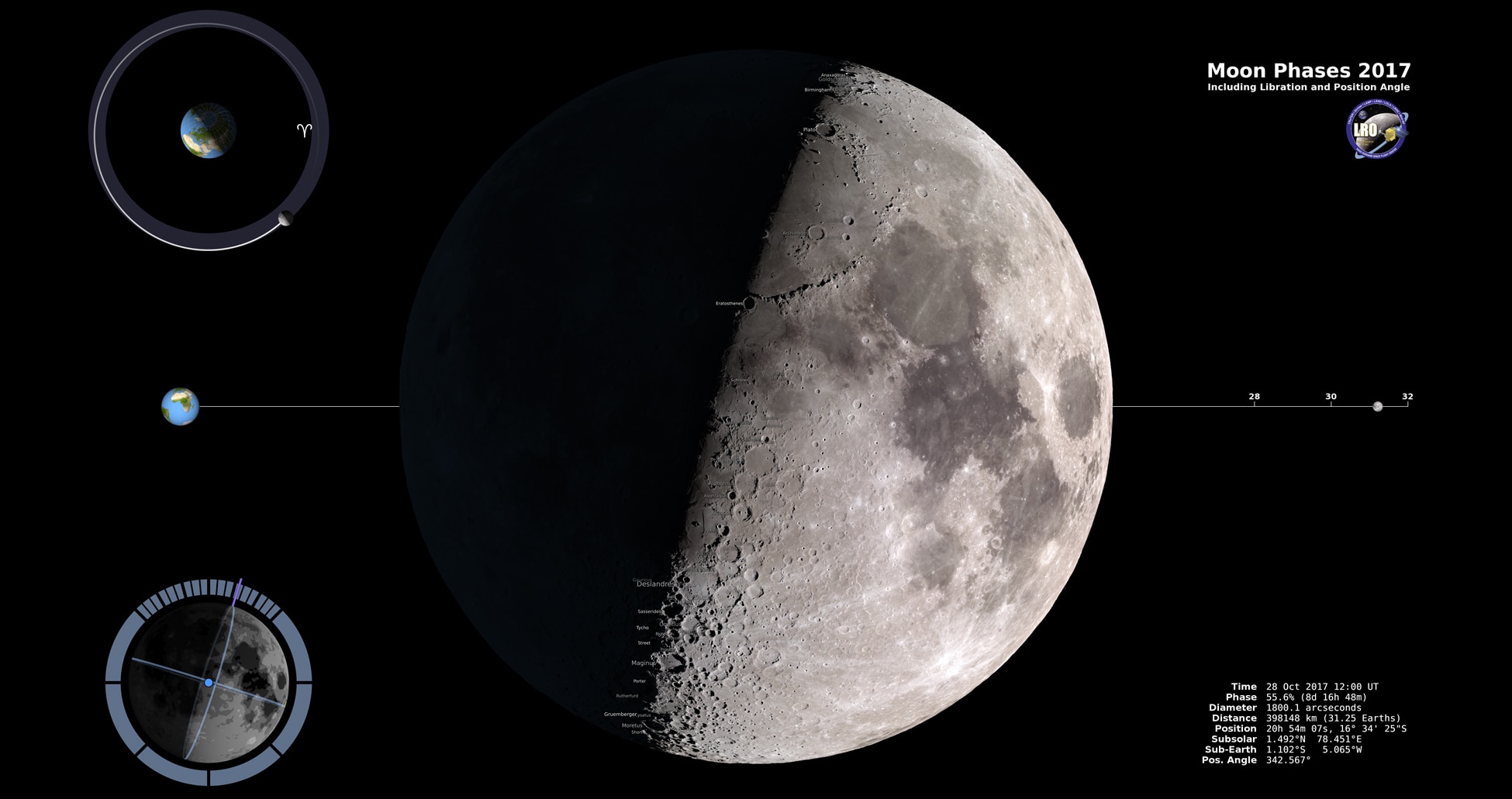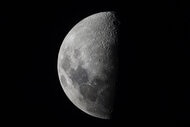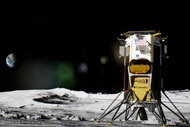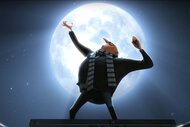Create a free profile to get unlimited access to exclusive videos, sweepstakes, and more!
Go out tonight and observe the Moon!

Today — Saturday, October 28, 2017 — is International Observe the Moon Night.
I love this idea. Started by the folks working on NASA’s Lunar Reconnaissance Orbiter (one of my all-time favorite space probes), the purpose is as simple as it is wonderful: “to encourage people around the world to go out and observe Earth's nearest neighbor.”
I strongly agree with this sentiment! If you have the ability to go outside and look up, the Moon is lovely to behold. It’s so bright and obvious, visible at some point nearly every single day, that it’s hard for me not to see it.
Despite that, most people go about their lives never noticing it, or at best just glancing at it. But when you really see it, it has many tales it will reveal.
Did you know that it’s visible during the day, when the Sun is up? This really does surprise a lot of people. The Moon orbits the Earth, so sometimes it’s near the Sun in the sky, and sometimes farther away. When it’s near the Sun it has to be up during the daytime.
And it looks different during the day than at night. Those dark patches you can see on the Moon were formed in gigantic impacts on the surface billions of years ago, letting vast fields of lava bubble up and spread over the surface. At night they’re dark; they reflect much less light than the cratered surface around them.
But during the sky, the blue light in the sky makes them also appear blue, which is why we call these feature maria (singular: mare); that’s Latin for “sea.” They have fanciful names, mostly for states of mind: Mare Crisium (Sea of Crises), Mare Serentitatis (Sea of Serenity (if you’re a Firefly fan this is particularly shiny), Mare Tranquillitatis (Sea of Tranquility), and so on.
As the Moon orbits Earth, the angle between it and the Sun changes, and that’s what causes the phases. Every day we see a new aspect of it! This not only reveals new territory on the surface lit by the Sun, but also changes the angles of the shadows on the surface, giving us a different view of features like craters, mountains, cliffs, and sinuous rilles. Through a telescope, the view is never static.
International Observe the Moon Night is held every year sometime in October when the Moon is near first quarter (or half full). This is one of the best times to see it. It’s up high at sunset, the day/night line (called the terminator) is prominent and highlighting many features on the Moon’s meridian, and with many students in school it provides a chance for some real-life science education.
There are hundreds of events all over our own planet celebrating this night. Take a look and see what’s near you; perhaps a local observatory or astronomy club is hosting an observing party. If you’ve never seen the Moon through even a small telescope you’re in for a real treat. It’s amazing the detail you can see! And if you’ve seen it before it still never fails to delight. I’ve seen the Moon countless times through all manner of equipment, and it still fascinates and awes me. Even if it’s cloudy or going outside is an issue for you, many places will be showing the view live online (like my friends at the Virtual Telescope Project).
Despite it being close, big, and bright, there’s so much left to learn about it. We’re not quite sure how it formed. It looks like it once had a decent atmosphere. Should we put a base there first before going to Mars? When in fact will we be going back? Who will be the first human in a generation to set foot upon its gray, dusty surface? Who will be the first to stay there, making it their home?
Perhaps it will be someone who will look at the Moon carefully for the first time tomorrow night. Join them.












